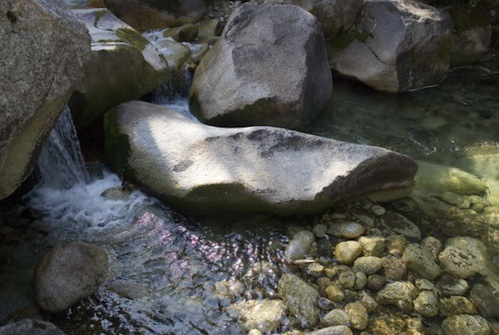
The headwaters of Little Cottonwood Creek gather at 9800 feet, formed from intermittent creeks and outflow from Cecret Lake. From there the stream drops approximately 5400 feet over 27 miles to its confluence with the Jordan River, a larger drop than any other Wasatch Front stream. It follows the canyon course carved by glaciers.
In the 1870s Little Cottonwood Canyon was known for its fabled mining town, Alta. Fortunes in silver and lead were made overnight and lost just as quickly during the boom-and-bust period of the late 1800s. Now the creek and its eponymous canyon are known more for the two, world renowned ski resorts that have built their reputations on the watershed's frozen water, the famous powder snow that often totals over 500 inches at Alta, loaded with 50 inches of moisture.
Smelters were built next to Little Cottonwood Creek, and past mining and smelting activities continue to affect stream chemistry. There were several hydropower operations over the years, and the stream still generates power for Murray City. Water managers today need to deal with those historical legacies: heavy metal seepage and water rights claimed when Utah was a territory.
The canyon is protected as a valuable watershed for culinary water, with no dogs or horses allowed. But while timber and mining interests claimed the canyon in the late 1800s, those extractive industries have given way to a new industry in Utah, recreation. All recreational users, whether alpine or backcountry skiers, hikers or bikers, birders or campers, zealously guard their rights in the storied canyon and often compete with each other for their bit of heaven on Earth.
 View Little Cottonwood Gallery
View Little Cottonwood Gallery
Little Cottonwood Water Treatment Plant
Murray City Park
Wheeler Historic Farm
